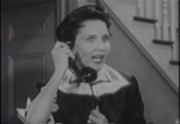The Adventures of Sherlock Holmes (1954)
Video Item Preview
Share or Embed This Item
movies
The Adventures of Sherlock Holmes (1954)
Season 1 of the Public Domain series The Adventures of Sherlock Holmes (1954)
- Addeddate
- 2016-12-06 18:39:22
- Identifier
- SherlockHolmes1954
- Scanner
- Internet Archive HTML5 Uploader 1.6.3
comment
Reviews
Reviewer:
Tom Draoi
-
favoritefavoritefavoritefavoritefavorite -
February 3, 2024
Subject: Classic
Subject: Classic
Classic! Must Watch!
Reviewer:
spurlock2355
-
favoritefavoritefavoritefavorite -
December 10, 2018
Subject: Season 1 Episode 5
Subject: Season 1 Episode 5
The Adventures of Sherlock Holmes, classified in mystery and crime genre, is a TV adaptation of the book written by Arthur Conan Doyle. The show told the stories of a detective, Sherlock Holmes, and his assistant, Dr. Watson, who made work of solving crimes. Holmes was both a consultant detective with law enforcement and a private detective who took cases from an array of clients, in both instances solving even the most intricate cases (IMDb). Holmes is portrayed as providing a new sense of justice, one seen as fairer than the regular criminal justice system. Owen Edwards, a Welsh broadcaster of the late 1900s, wrote and published a biography of Arthur Doyle – he suggests that his book was written to reveal real social injustices in our world, specifically “official incompetence and aristocratic privilege” (The Quest for Sherlock Holmes). The TV adaptation acts just as the book does, providing thrilling entertainment while also bringing to light real-life unjust issues.
Season 1 episode 5 of the series, The Case of the Belligerent Ghost, told the story of a “ghost” who attacked Dr. Watson. Earlier in the night, Dr. Watson witnessed a man by the name of Albert Higgins suffer a heart attack. Dr. Watson took Higgins home and was sure he was dead. Later, however, Dr. Watson was punched, absolutely positive that it had been Higgins. Sherlock Holmes then begins the investigation of the belligerent ghost. Throughout the show, it’s obvious that Holmes suspects more than what he is letting on. Holmes notes the paint under Higgins nails, what he wore that night, and that he was carrying a package – while both Dr. Watson and the audience are confused as to how these details fit together, Holmes has already pieced together the puzzle. Holmes, seemingly off topic, tells the inspector that the Moonlight Madonna had been stolen and that the one in the museum was a fake. While Dr. Watson is unsure as to how the painting is involved, he follows in Holmes’s footsteps to a Mr. Benson’s house. There, Holmes discovers the real Moonlight Madonna, caught face-to-face with Mr. Benson. Holmes finally reveals what he has known all along – Dr. Watson was not punched by a ghost, but by Mr. Benson, who realized Dr. Watson had saw him with the stolen painting (what Dr. Watson described as a package). Mr. Benson had worn a long trench coat and a floppy hat, just as Higgins had the night of the heart attack, and in the dimly lit night Dr. Watson had mistaken the two men. At this point, Mr. Benson cocks his pistol to presumably shoot Dr. Watson and Holmes, but Dr. Watson pulls the rug out from under Mr. Benson’s feet and successfully retrieved the gun. The episode ends with a short segment of comic relief between Dr. Watson and Holmes, Holmes admitting to “tugging” Watson’s nose and allowing Dr. Watson to believe it was the same “ghost” who had punched him before.
Initially, The Adventures of Sherlock Holmes ran on the ITV network based in the United Kingdom where the series began. The series was adapted by networks overseas, as well – in the United States, the show first aired on the PBS Mystery! Station, later airing on the WGBH network, a branch of PBS. The series transmitted to two other U.S. cable networks, the Disney Channel and A&E Network. The show also aired on the Canadian CBC network. Originally, the network ran the show from 1954-1955 – however, British networks adapted the series and rebroadcasted from 1984-1994 using modifications from the book for episodes.
_________________________
During the 1940s before The Adventures of Sherlock Holmes first aired, TV was described as “filling but flavorless” (Learning to Live with Television). As the United States rolled over into a new decade, TV networks began to diversify the programs to keep their current audiences and attract new viewers. Americans wanted action, adventure, and mystery, something to keep them wanting to watch more each week. However, during the 1950s, social critics worried that TV was becoming addictive to children – they also warned that violent TV would create violent children. Surveys of the time showed that children were watching upwards of 30 hours of TV a week which came as a shocking discovery. While some Americans bought into the argument, as is obvious with the uproar the Dodd’s hearings caused, others embraced TV (even violent shows) as an escape from the real-world realities of the Cold War. While the show could have been considered violent since the storyline involved death, theft, and weapons, the American public continued to enjoy The Adventures of Sherlock Holmes because, even without realizing it, the stories saved Americans from their troubled lives and rang out with the sound of freedom and integrity when justice was served.
Season 1 episode 5 of the series, The Case of the Belligerent Ghost, told the story of a “ghost” who attacked Dr. Watson. Earlier in the night, Dr. Watson witnessed a man by the name of Albert Higgins suffer a heart attack. Dr. Watson took Higgins home and was sure he was dead. Later, however, Dr. Watson was punched, absolutely positive that it had been Higgins. Sherlock Holmes then begins the investigation of the belligerent ghost. Throughout the show, it’s obvious that Holmes suspects more than what he is letting on. Holmes notes the paint under Higgins nails, what he wore that night, and that he was carrying a package – while both Dr. Watson and the audience are confused as to how these details fit together, Holmes has already pieced together the puzzle. Holmes, seemingly off topic, tells the inspector that the Moonlight Madonna had been stolen and that the one in the museum was a fake. While Dr. Watson is unsure as to how the painting is involved, he follows in Holmes’s footsteps to a Mr. Benson’s house. There, Holmes discovers the real Moonlight Madonna, caught face-to-face with Mr. Benson. Holmes finally reveals what he has known all along – Dr. Watson was not punched by a ghost, but by Mr. Benson, who realized Dr. Watson had saw him with the stolen painting (what Dr. Watson described as a package). Mr. Benson had worn a long trench coat and a floppy hat, just as Higgins had the night of the heart attack, and in the dimly lit night Dr. Watson had mistaken the two men. At this point, Mr. Benson cocks his pistol to presumably shoot Dr. Watson and Holmes, but Dr. Watson pulls the rug out from under Mr. Benson’s feet and successfully retrieved the gun. The episode ends with a short segment of comic relief between Dr. Watson and Holmes, Holmes admitting to “tugging” Watson’s nose and allowing Dr. Watson to believe it was the same “ghost” who had punched him before.
Initially, The Adventures of Sherlock Holmes ran on the ITV network based in the United Kingdom where the series began. The series was adapted by networks overseas, as well – in the United States, the show first aired on the PBS Mystery! Station, later airing on the WGBH network, a branch of PBS. The series transmitted to two other U.S. cable networks, the Disney Channel and A&E Network. The show also aired on the Canadian CBC network. Originally, the network ran the show from 1954-1955 – however, British networks adapted the series and rebroadcasted from 1984-1994 using modifications from the book for episodes.
_________________________
During the 1940s before The Adventures of Sherlock Holmes first aired, TV was described as “filling but flavorless” (Learning to Live with Television). As the United States rolled over into a new decade, TV networks began to diversify the programs to keep their current audiences and attract new viewers. Americans wanted action, adventure, and mystery, something to keep them wanting to watch more each week. However, during the 1950s, social critics worried that TV was becoming addictive to children – they also warned that violent TV would create violent children. Surveys of the time showed that children were watching upwards of 30 hours of TV a week which came as a shocking discovery. While some Americans bought into the argument, as is obvious with the uproar the Dodd’s hearings caused, others embraced TV (even violent shows) as an escape from the real-world realities of the Cold War. While the show could have been considered violent since the storyline involved death, theft, and weapons, the American public continued to enjoy The Adventures of Sherlock Holmes because, even without realizing it, the stories saved Americans from their troubled lives and rang out with the sound of freedom and integrity when justice was served.
There are 2 reviews for this item. .
208,905 Views
203 Favorites
DOWNLOAD OPTIONS
IN COLLECTIONS
1950s Classic TV Classic TV
Classic TV  Television
Television 
Uploaded by Unknown on
 Live Music Archive
Live Music Archive Librivox Free Audio
Librivox Free Audio Metropolitan Museum
Metropolitan Museum Cleveland Museum of Art
Cleveland Museum of Art Internet Arcade
Internet Arcade Console Living Room
Console Living Room Open Library
Open Library American Libraries
American Libraries TV News
TV News Understanding 9/11
Understanding 9/11

